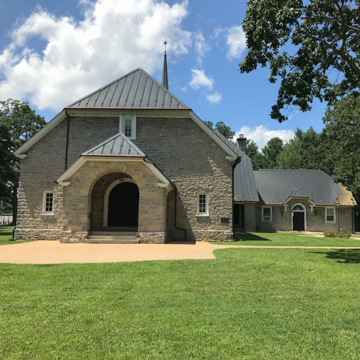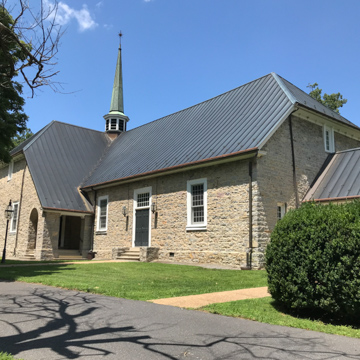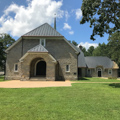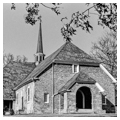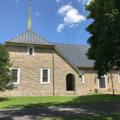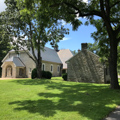Fort Defiance was the site of a tollgate along the old Valley Turnpike and there were several services provided for travelers here, including a tavern, recently restored by the local historical society, and a spring called Willow Spout. The small one-story brick house (early nineteenth century) located across from the spring is believed locally to be the tollhouse. Presbyterian settlers built a log church here c. 1740 on a site east of the existing church. They replaced the log building in 1749 with the rectangular stone church with a clipped gable roof, which remains the core of the present building and is believed to be the oldest Presbyterian church in continuous use in Virginia. The church has been altered and added to several times. The main entrance was moved from the south wall to the east facade. A major remodeling in 1921–1922 gave the church a transept with a delicate spire, a lengthened sanctuary, and an entrance porch that echoes the clipped-gable design of the roof. The session house, which had been attached to the church's north side opposite the original entrance, was removed and located along the drive north of the church and now houses a museum of the church's history. The church cemetery of the earlier log church, near I-81, retains a nice collection of early grave markers.
You are here
Augusta Stone Church
If SAH Archipedia has been useful to you, please consider supporting it.
SAH Archipedia tells the story of the United States through its buildings, landscapes, and cities. This freely available resource empowers the public with authoritative knowledge that deepens their understanding and appreciation of the built environment. But the Society of Architectural Historians, which created SAH Archipedia with University of Virginia Press, needs your support to maintain the high-caliber research, writing, photography, cartography, editing, design, and programming that make SAH Archipedia a trusted online resource available to all who value the history of place, heritage tourism, and learning.










